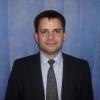A new study by The University of Manchester has shed light on why athletes are more likely to have abnormal heart rhythms.
Elderly athletes with a lifelong history of training and competing in endurance events like marathons, triathlons and iron man challenges can have heart rhythm disturbances, known as arrhythmias..
The Manchester research, which was funded by the British Heart Foundation, shows molecular changes in the heart's pacemaker occur in response to exercise training. The finding overturns the commonly held belief that an increased activity of the autonomic nervous system causes this specific reaction to endurance training.
While normal adults have resting heart rates between 60-100 beats per minute, hearts of endurance athletes can beat only 30 times per minute or even lower at night time when there can be long pauses between heart beats.
Cyclists Sir Chris Hoy and Miguel Indurain reportedly had resting heart rates of 30 and 28 beats per minute.
Dr Alicia D'Souza, from The University of Manchester and first author on the paper, said: "The heart rate is set by the heart's pacemaker, but this is controlled by the nervous system. The 'vagal' nerves lower the heart rate and therefore it was assumed the low heart rate of athletes is the result of over activity of the vagal nerves.
"But our research shows this is not the case. Actually the heart's pacemaker changes in response to training and in particular there is a decrease in an important pacemaker protein, known as HCN4, and this is responsible for the low heart rate."
The researchers say these molecular changes in the sinus node, which is the cardiac structure responsible for generating heart rhythm , may help us to understand the more frequent occurrence of heart rhythm disturbances or even loss of consciousness in athletes.
Professor Mark Boyett, lead researcher on the study, added: "This is important because although normally a low resting heart rate of an athlete does not cause problems, elderly athletes with a lifelong training history are more likely to need an artificial electronic pacemaker fitted."
More than 500 marathons take place in Europe and America each year with around one million participants. The number of people taking part is set to increase by 5% each year.
But Professor Boyett said: "Although endurance exercise training can have harmful effects on the heart, it is more than outweighed by the beneficial effects."
The findings of the study are reported in Nature Communications.







